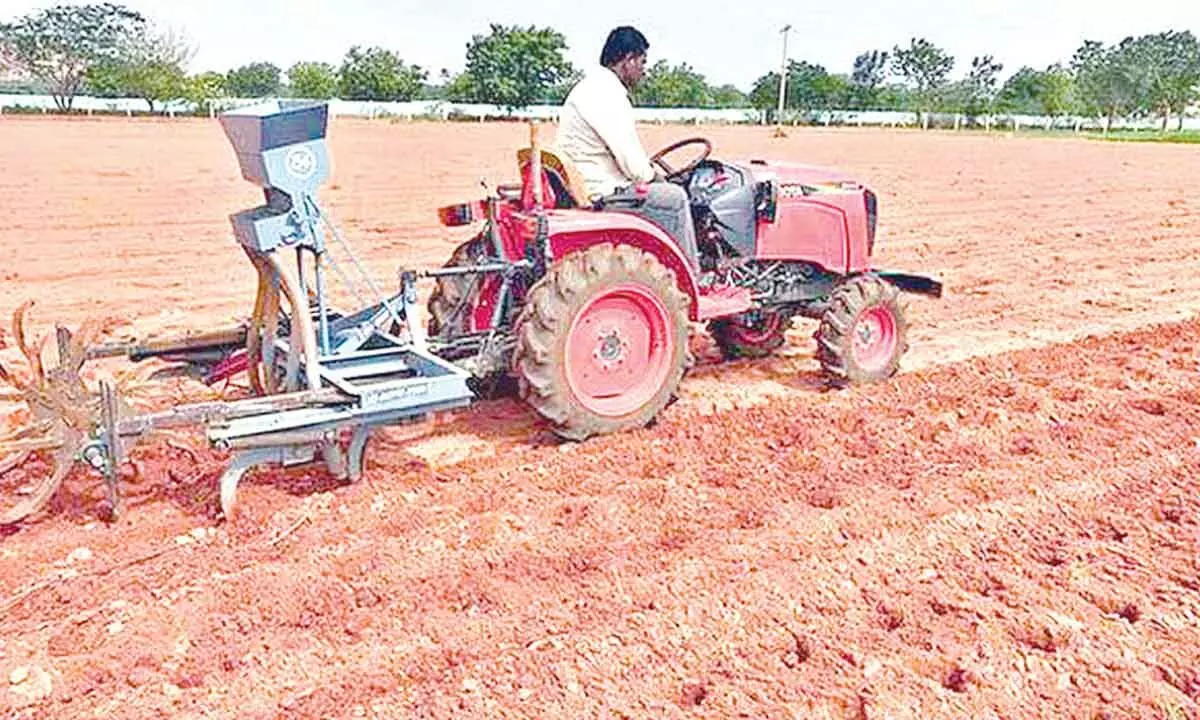ANGRAU Diker proves to be a boon to farmers

A view of the newly invented Agriculture Diker.
An agriculture scientist Nalabolu Kishore's innovation for arresting soil erosion and water conservation has proved to be a boon to farmers. His invention ‘ANGRAU Diker' while sowing the seed also conserves water and arrests soil erosion.
Anantapur: An agriculture scientist Nalabolu Kishore's innovation for arresting soil erosion and water conservation has proved to be a boon to farmers. His invention 'ANGRAU Diker' while sowing the seed also conserves water and arrests soil erosion. The Diker can be attached to any existing tractor and seed planter for sowing groundnut, red gram, castor, bajra, cotton, chickpea or korra millets or any other crop that requires wide-spaced sowing. At an experimental sowing demonstration on the premises of Agriculture Research Station, Rekulakunta in Anantapur district, the Diker showed the ease with which four rows of seed insertion could be done with dikes created between them at a 32 cm gap with a dike (depression or hole) dimension of 15 cm width 15 cm depth. Kishore elaborating on the benefits of Diker told The Hans India that each depression in the field had the capacity to hold 500 ml of rainwater and 1,12,000 dikes created in 1 hectare, the land will have a holding capacity of 60,000 litres taking into account evaporation losses. "This water in small quantities will be available close to the root system of the crop, providing maximum advantage. In groundnut crop, the pods do not penetrate down beyond 10 cm, hence this was ideal depth for it," Kishore explained.Andhra News, Andhra Pradesh News, AP News, Andhra news today, Telugu news, Andhra Headlines, Breaking News, Latest News, Andhra Pradesh, Latest Andhra Pradesh news, Andhra Pradesh Live news, Andhra Pradesh news online, AP News, Andhra Pradesh News, Vijayawada News, Telugu News, Telugu News Headlines, Telugu News Headlines, Latest Andhra News
Four bent arrow-shaped iron rods attached a rotating shaft get dragged by a tractor, that has a seed planter attached to it to introduce seed at a predetermined gap between the rows. The farmer needs to just fill the seed box and do the entire activity at one go single handed, saving expensive manual labour. Guided by the Centre head, Kishore had taken up this project of developing this agriculture implement, that will undergo several changes and will take a concrete shape this year end. "To optimise its use, we have come up with having several variants of Diker to meet the needs of each and every crop, while bushes are fixed to wheel holding the ploughing arrows, the spacing between them and the depth to which they should dig into the soil can be adjusted," he explained. The Diker helps in curbing runoff of fertile topsoil during a rain, arresting water flow and conserving it very close to the roots and was most useful for all dryland crops. These dikes are useful in in situ water conservation and are now being termed as micro-farm ponds.














